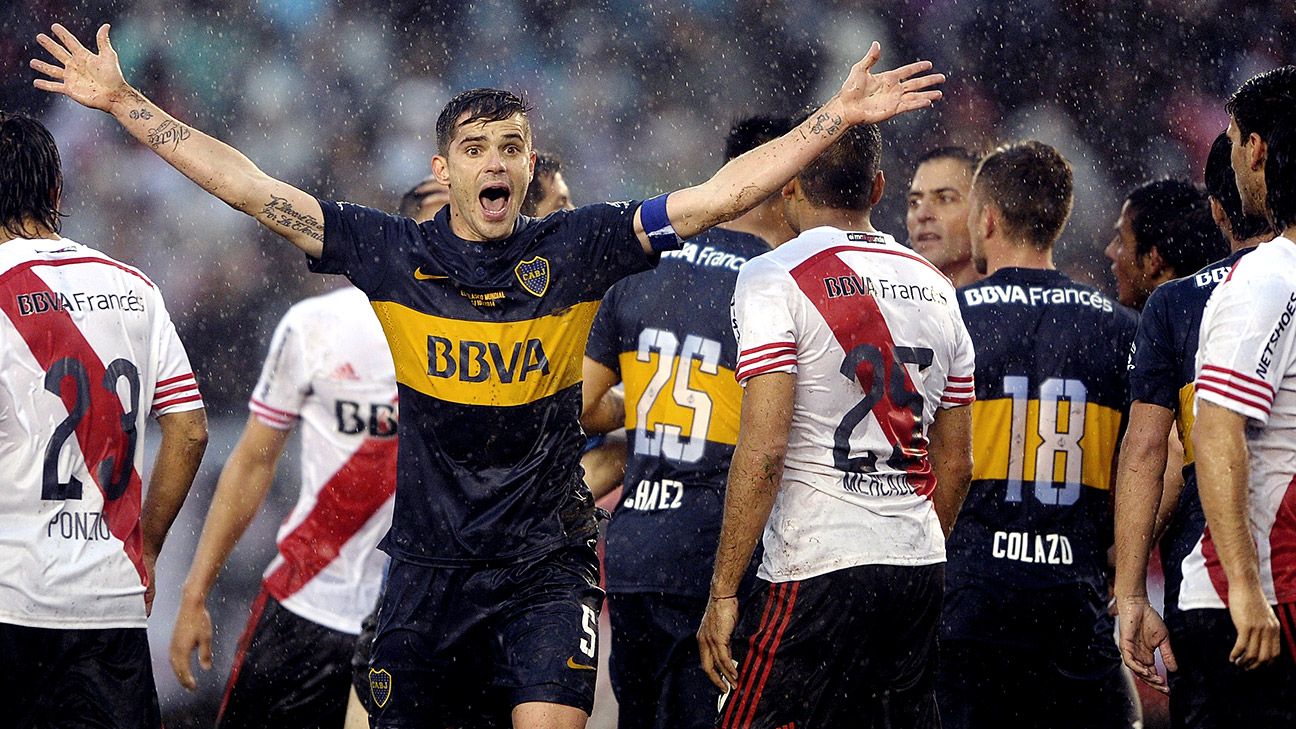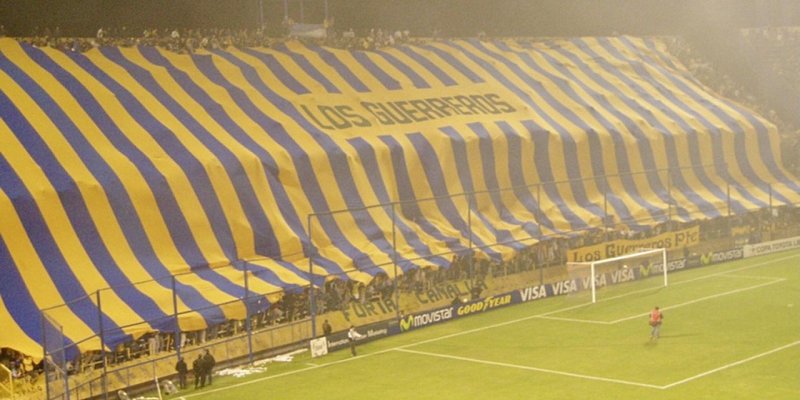“Football Rivalries in Argentina: A Passionate Affair
Related Articles Football Rivalries in Argentina: A Passionate Affair
Football Rivalries in Argentina: A Passionate Affair

Argentina, a nation renowned for its fervent passion for football, boasts a rich tapestry of rivalries that ignite the hearts and minds of fans across the country. These rivalries, deeply ingrained in the social and cultural fabric of Argentina, transcend the boundaries of mere sporting contests, evolving into intense displays of loyalty, pride, and unwavering devotion.
The Superclásico: Boca Juniors vs. River Plate
At the pinnacle of Argentine football rivalries stands the Superclásico, a clash between Buenos Aires giants Boca Juniors and River Plate. This legendary encounter, often hailed as one of the most intense and passionate derbies in the world, captivates the attention of millions, not only in Argentina but also across the globe.
The roots of the Superclásico trace back to the early 20th century, when both clubs were founded in the working-class neighborhood of La Boca. As they grew in stature and moved to different parts of the city, the rivalry intensified, fueled by social and economic disparities. Boca Juniors, traditionally associated with the working class, found themselves pitted against River Plate, who became linked to the more affluent sectors of society.
The Superclásico is more than just a football match; it is a cultural phenomenon that embodies the essence of Argentine passion. The atmosphere in the stadium is electric, with fans creating a cauldron of noise, color, and emotion. The deafening chants, the vibrant banners, and the unwavering support of the fans create an unforgettable spectacle that is both awe-inspiring and intimidating.
The Superclásico has produced countless memorable moments, legendary players, and unforgettable goals. From Diego Maradona’s mesmerizing performances for Boca Juniors to Enzo Francescoli’s elegant displays for River Plate, the Superclásico has witnessed the brilliance of some of the greatest footballers of all time.
Beyond the sporting aspect, the Superclásico carries significant social and political weight. It is a platform for fans to express their identities, their loyalties, and their passions. The rivalry has often been used as a tool for political mobilization, with politicians and social movements leveraging the fervor of the Superclásico to advance their agendas.
The Clásico de Avellaneda: Independiente vs. Racing Club
Another fierce rivalry that ignites the passion of Argentine football fans is the Clásico de Avellaneda, a clash between Independiente and Racing Club, two clubs located in the city of Avellaneda, just south of Buenos Aires. This rivalry, steeped in history and tradition, is one of the oldest and most intense in Argentine football.
Independiente, known as "El Rojo" (The Red), and Racing Club, known as "La Academia" (The Academy), have a long and storied history, with both clubs playing a significant role in the development of Argentine football. The rivalry between the two clubs dates back to the early 20th century, when both clubs were founded in Avellaneda.
The Clásico de Avellaneda is a battle for local supremacy, a clash of ideologies, and a test of loyalty. The fans of both clubs are fiercely passionate, and the atmosphere in the stadium is electric. The chants, the banners, and the unwavering support of the fans create an unforgettable spectacle that is both exhilarating and intimidating.
The Clásico de Avellaneda has produced countless memorable moments, legendary players, and unforgettable goals. From Arsenio Erico’s prolific goalscoring for Independiente to Alberto Ohaco’s elegant play for Racing Club, the Clásico de Avellaneda has witnessed the brilliance of some of the greatest footballers in Argentine history.
Beyond the sporting aspect, the Clásico de Avellaneda carries significant social and cultural weight. It is a platform for fans to express their identities, their loyalties, and their passions. The rivalry has often been used as a tool for social cohesion, with fans from different backgrounds coming together to support their respective clubs.
Other Notable Rivalries
While the Superclásico and the Clásico de Avellaneda are the most prominent rivalries in Argentine football, there are several other notable rivalries that ignite the passion of fans across the country.

-
The Clásico Rosarino: Rosario Central vs. Newell’s Old Boys
The Clásico Rosarino, a clash between Rosario Central and Newell’s Old Boys, is one of the most intense and passionate derbies in Argentina. The rivalry between the two clubs, both based in the city of Rosario, dates back to the early 20th century. The Clásico Rosarino is a battle for local supremacy, a clash of ideologies, and a test of loyalty.
-
The Clásico Platense: Estudiantes de La Plata vs. Gimnasia y Esgrima La Plata
The Clásico Platense, a clash between Estudiantes de La Plata and Gimnasia y Esgrima La Plata, is another fierce rivalry that ignites the passion of Argentine football fans. The rivalry between the two clubs, both based in the city of La Plata, dates back to the early 20th century. The Clásico Platense is a battle for local supremacy, a clash of ideologies, and a test of loyalty.
-
The Clásico Cordobés: Belgrano vs. Talleres
The Clásico Cordobés, a clash between Belgrano and Talleres, is one of the most intense and passionate derbies in the Argentine interior. The rivalry between the two clubs, both based in the city of Córdoba, dates back to the early 20th century. The Clásico Cordobés is a battle for local supremacy, a clash of ideologies, and a test of loyalty.
The Significance of Football Rivalries in Argentina
Football rivalries in Argentina are more than just sporting contests; they are an integral part of the social, cultural, and political fabric of the country. These rivalries provide a platform for fans to express their identities, their loyalties, and their passions. They are a source of pride, a symbol of community, and a way of life for many Argentines.
Football rivalries in Argentina also play a significant role in shaping the country’s national identity. The rivalries between different clubs reflect the diverse social, economic, and political landscapes of Argentina. They are a reminder of the country’s rich history, its complex social dynamics, and its unwavering passion for football.
However, it is important to acknowledge the negative aspects associated with football rivalries in Argentina. Violence, hooliganism, and social unrest have often marred these rivalries, causing harm to individuals, communities, and the reputation of Argentine football. It is crucial for authorities, clubs, and fans to work together to promote a culture of respect, tolerance, and fair play, ensuring that football rivalries remain a source of passion and excitement without resorting to violence or hatred.
In conclusion, football rivalries in Argentina are a passionate affair, deeply ingrained in the country’s social, cultural, and political fabric. These rivalries provide a platform for fans to express their identities, their loyalties, and their passions. While it is important to acknowledge the negative aspects associated with these rivalries, it is undeniable that they are an integral part of the Argentine football experience. The Superclásico, the Clásico de Avellaneda, and other notable rivalries continue to ignite the hearts and minds of fans across the country, ensuring that football remains a source of passion, pride, and unwavering devotion in Argentina.

